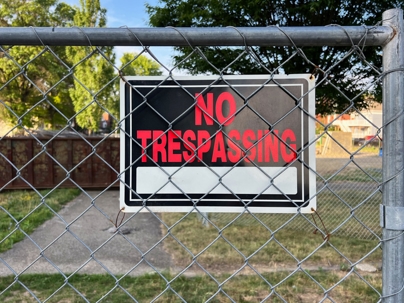Differences Between Trespassing and Accidental Entry
Have you ever wondered where the line between trespassing and simply making a mistake is drawn? Whether you're a property owner, a hiker, or just someone curious about your rights, understanding this distinction is essential.
Knowing the difference can help protect you from legal trouble or help you assert your rights if your property is involved. At Branstad & Olson, we’re here to break it down and guide you through these nuances with clarity and confidence.
What Sets Trespassing Apart
Trespassing is more than just stepping onto someone else’s property—it’s an intentional, unauthorized intrusion. Legally, it requires awareness and intent. For example, if someone ignores “No Trespassing” signs or enters a property they know they’re prohibited from accessing, that’s trespassing.
The law focuses heavily on intent, meaning the person had to know (or should have known) they didn’t belong there. If you walk past fences or blatantly disregard property boundaries, the courts see this as a clear violation. Trespassing isn’t just invasive; it can result in serious legal consequences.
Understanding Accidental Entry
Accidents happen. Maybe you were hiking and didn’t see a property boundary, or you got turned around and strayed onto private land by mistake. Unlike trespassing, accidental entry is unintentional. While it might result in awkward situations, the law often views these cases with more understanding.
For example, if someone enters private land thinking it’s public due to unclear signage, that’s different from deliberate trespassing. What separates accidental entry is the lack of intent to intrude. Courts generally look at the situation’s context, the actions taken after the mistake was realized, and any evidence showing it was genuinely accidental.
How Context Shapes Legal Outcomes
Both intent and local jurisdiction play massive roles in property disputes. Courts focus on intent when deciding between trespassing and accidental entry. They also look at factors like unawareness or genuine misunderstandings that might explain the situation.
Where you are matters, too. Local laws vary from state to state, which is why it’s essential to understand the specific rules governing your area. Legal outcomes also depend on past rulings or precedents, which shape how cases are judged. This is why having knowledgeable legal guidance is so important.
Keeping Yourself Out of Trouble
If you want to avoid trespassing accusations, start by planning ahead. Know where you’re going and verify you have permission to be there. Pay attention to fences, posted signs, and other property markers. Tools like GPS systems and property boundary apps can be lifesavers, especially when exploring unfamiliar areas.
On the flip side, educating others about property laws is a great way to foster understanding. Workshops, community initiatives, and even clear signage can help prevent issues before they arise. Technology also plays a big role in ensuring legal compliance, providing clarity on where you can and can’t go.
Need Help? Call Branstad & Olson
Whether you’re dealing with trespassing accusations or someone caught in an accidental entry situation, having the right legal support matters. At Branstad & Olson, we’re committed to helping you understand and protect your rights. Don’t wait for small misunderstandings to turn into big legal battles.
Call (515) 329-3100 today to speak with experienced attorneys who have your back.

